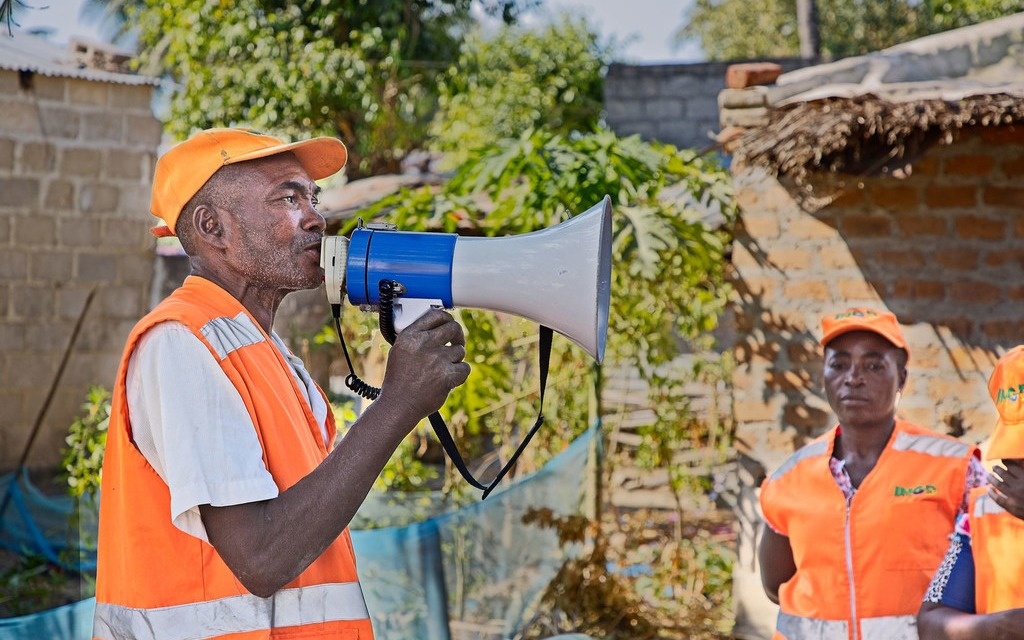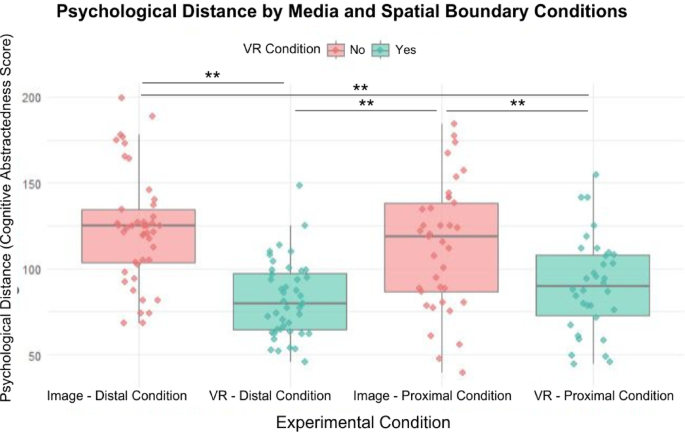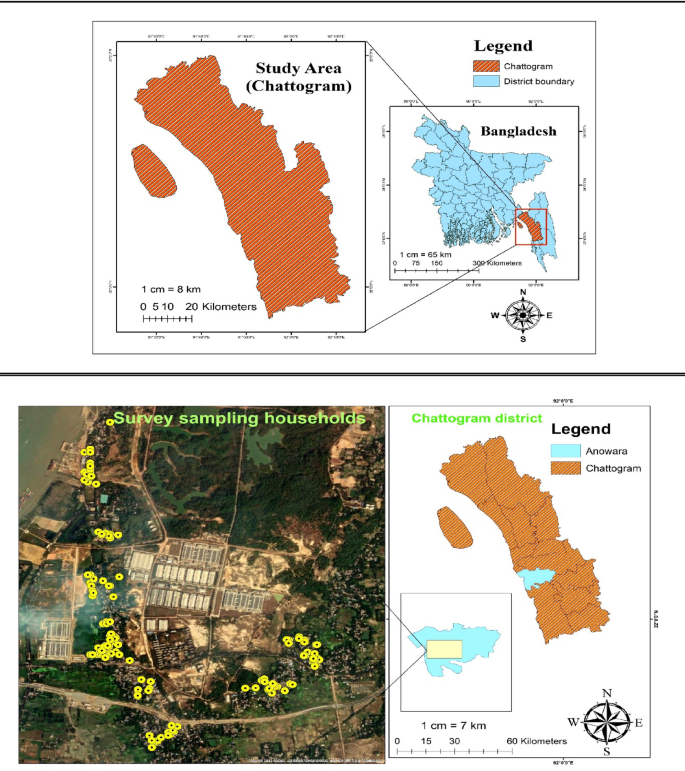Report on the Imperative of Early-Warning Systems for Achieving Sustainable Development Goals
Introduction: The Role of Early-Warning Systems in Climate Resilience and SDG Attainment
According to the United Nations Secretary-General, early-warning systems are a critical tool for mitigating the impacts of climate-related hazards, directly supporting the achievement of several Sustainable Development Goals (SDGs). The effectiveness of these systems is evident in their capacity to protect lives, livelihoods, and infrastructure, which are foundational to sustainable development.
- SDG 2 (Zero Hunger): Systems empower farmers to protect crops and livestock, safeguarding food security.
- SDG 11 (Sustainable Cities and Communities): They enable families to evacuate safely and protect entire communities from devastation, building resilience.
- SDG 3 (Good Health and Well-being): By providing timely alerts, these systems drastically reduce disaster-related mortality.
Progress and Gaps in Global Coverage: A Challenge to SDG 13
The Early Warnings for All initiative, launched in 2022, aims for universal protection by 2027, a key target for climate adaptation under SDG 13 (Climate Action). While progress has been made, significant gaps remain, particularly in the world’s least developed countries, undermining global efforts to build resilience against accelerating climate change impacts.
- Countries with effective early-warning systems have disaster-related mortality rates that are at least six times lower.
- A 24-hour notice of a hazardous event can reduce ensuing damage by up to 30 percent.
- Over half of all countries now have multi-hazard early-warning systems, yet universal coverage is still a distant goal.
The World Meteorological Organization (WMO) has emphasized that more extreme weather is eroding hard-won development gains, making the scale-up of these systems an urgent priority for protecting progress towards all SDGs.
The Human Cost and its Impact on Global Equality
The disproportionate impact of climate-related disasters on developing nations highlights a critical challenge to SDG 1 (No Poverty) and SDG 10 (Reduced Inequalities). WMO data indicates that over the past five decades, weather, water, and climate-related hazards have caused over two million deaths, with 90 percent of these fatalities occurring in developing countries. This underscores the need for equitable access to climate intelligence and protective technologies.
Financial Imperatives for Climate Action: A Call for SDG 17
Achieving universal early-warning coverage and broader climate action is contingent upon a significant increase in international financial cooperation, as outlined in SDG 17 (Partnerships for the Goals). The UN Secretary-General has stated that reaching every community requires a surge in financing, yet many developing countries are constrained by limited fiscal space, debt burdens, and slowing growth.
Key financial targets to enable climate action include:
- Mobilizing $1.3 trillion per year by 2035 to finance climate action in developing countries.
- Fulfilling the commitment by developed countries to double climate adaptation funding to $40 billion this year.
- Securing substantial contributions for the Loss and Damage Fund to support vulnerable nations.
Future Commitments and the Integrity of Climate Information
The international community faces an inevitable overshooting of the 1.5°C global warming target, making ambitious climate action more critical than ever. The upcoming COP30 climate conference in Brazil is a pivotal moment for leaders to agree on a credible plan for emission reductions and climate finance.
Furthermore, achieving SDG 16 (Peace, Justice and Strong Institutions) in the context of climate change requires a commitment to information integrity. The UN Secretary-General stressed the need to combat disinformation and greenwashing, ensuring that scientific truth guides policy and action. The expertise of institutions like the WMO is essential in this effort to build a resilient and sustainable future for all.
1. Which SDGs are addressed or connected to the issues highlighted in the article?
The article primarily addresses issues related to climate change, disaster risk reduction, and international cooperation, which directly connect to several Sustainable Development Goals (SDGs). The main SDGs identified are:
-
SDG 1: No Poverty
The article highlights how extreme weather events destroy livelihoods and erode development gains, particularly affecting developing countries. By discussing the protection of crops, livestock, and communities from devastation, it connects directly to building the resilience of the poor and vulnerable.
-
SDG 11: Sustainable Cities and Communities
The core theme of early-warning systems is to protect communities and enable safe evacuations. The article’s focus on reducing disaster-related mortality and damage in communities links directly to making human settlements safer and more resilient.
-
SDG 13: Climate Action
This is the most central SDG in the article. The discussion revolves around the accelerating impacts of climate change, the need for early-warning systems as an adaptation measure, limiting global warming to 1.5 degrees Celsius, reducing greenhouse gas emissions, and financing climate action.
-
SDG 17: Partnerships for the Goals
The article repeatedly emphasizes the need for international cooperation and finance. It calls for a “surge in financing” for developing countries, urges developed countries to honor their funding commitments, and discusses mobilizing trillions for climate action, all of which are central to the theme of global partnerships.
2. What specific targets under those SDGs can be identified based on the article’s content?
Based on the issues discussed, several specific SDG targets can be identified:
-
SDG 1: No Poverty
- Target 1.5: By 2030, build the resilience of the poor and those in vulnerable situations and reduce their exposure and vulnerability to climate-related extreme events and other economic, social and environmental shocks and disasters. The article’s focus on early-warning systems to protect communities, crops, and livestock directly supports this target.
-
SDG 11: Sustainable Cities and Communities
- Target 11.5: By 2030, significantly reduce the number of deaths and the number of people affected and substantially decrease the direct economic losses relative to global gross domestic product caused by disasters, including water-related disasters, with a focus on protecting the poor and people in vulnerable situations. The article explicitly mentions that early-warning systems reduce disaster-related mortality and damage by up to 30%.
- Target 11.b: By 2020, substantially increase the number of cities and human settlements adopting and implementing integrated policies and plans towards inclusion, resource efficiency, mitigation and adaptation to climate change, resilience to disasters, and develop and implement, in line with the Sendai Framework for Disaster Risk Reduction 2015–2030, holistic disaster risk management at all levels. The “Early Warnings for All” initiative is a direct implementation of this target.
-
SDG 13: Climate Action
- Target 13.1: Strengthen resilience and adaptive capacity to climate-related hazards and natural disasters in all countries. The entire discussion on scaling up early-warning systems is a direct measure to achieve this target.
- Target 13.3: Improve education, awareness-raising and human and institutional capacity on climate change mitigation, adaptation, impact reduction and early warning. The “Early Warnings for All” initiative and the call to fight disinformation are aligned with this target.
- Target 13.a: Implement the commitment undertaken by developed-country parties to the United Nations Framework Convention on Climate Change to a goal of mobilizing jointly $100 billion annually by 2020 from all sources to address the needs of developing countries in the context of meaningful mitigation actions and transparency on implementation and fully operationalize the Green Climate Fund through its capitalization as soon as possible. The article’s call for developed countries to double adaptation funding to $40 billion and mobilize $1.3 trillion per year by 2035 directly relates to this finance target.
-
SDG 17: Partnerships for the Goals
- Target 17.3: Mobilize additional financial resources for developing countries from multiple sources. The call for a “surge in financing” and mobilizing $1.3 trillion for climate action in developing countries supports this target.
- Target 17.4: Assist developing countries in attaining long-term debt sustainability through coordinated policies aimed at fostering debt financing, debt relief and debt restructuring, as appropriate, and address the external debt of highly indebted poor countries to reduce debt distress. The article mentions that developing countries are “blocked by…crushing debt burdens,” highlighting the relevance of this target.
3. Are there any indicators mentioned or implied in the article that can be used to measure progress towards the identified targets?
Yes, the article mentions several quantitative and qualitative indicators that can be used to measure progress:
- Reduction in Disaster-Related Mortality: The statement that “disaster-related mortality is at least six times lower in countries with good early-warning systems” serves as a direct indicator for Targets 1.5 and 11.5. This aligns with official indicators like Indicator 1.5.1 / 11.5.1: Number of deaths, missing persons and directly affected persons attributed to disasters per 100,000 population.
- Reduction in Economic Losses: The claim that “24 hours’ notice before a hazardous event can reduce damage by up to 30 per cent” is an indicator of reduced economic loss, relevant to Target 11.5. This relates to Indicator 11.5.2: Direct economic loss attributed to disasters in relation to global GDP.
- Coverage of Early-Warning Systems: The article states that “more than half of all countries now reportedly equipped with multi-hazard early-warning systems.” The progress of the “Early Warnings for All” initiative, which aims for universal coverage by 2027, is a key performance indicator for Targets 11.b and 13.3.
- Climate Finance Mobilization: Specific financial figures are mentioned as indicators of progress for Targets 13.a and 17.3. These include:
- The call for developed countries to “double climate adaptation funding to $40 billion this year.”
- The need to “mobilize $1.3 trillion per year by 2035 for developing countries.”
- The need for the Loss and Damage Fund to attract “substantial contributions.”
These align with Indicator 13.a.1: Amount of United States dollars provided and mobilized from developed countries for developing countries.
- Global Temperature Limit: The goal to “limit fast-advancing global warming to 1.5 degrees Celsius above pre-industrial era temperatures” is a primary global indicator for overall progress on SDG 13.
4. SDGs, Targets and Indicators Table
| SDGs | Targets | Indicators (as mentioned or implied in the article) |
|---|---|---|
| SDG 1: No Poverty | 1.5: Build the resilience of the poor and reduce their vulnerability to climate-related extreme events. |
|
| SDG 11: Sustainable Cities and Communities |
11.5: Significantly reduce deaths, affected people, and economic losses from disasters.
11.b: Implement integrated policies and plans for climate change adaptation and disaster resilience. |
|
| SDG 13: Climate Action |
13.1: Strengthen resilience and adaptive capacity to climate-related hazards.
13.3: Improve education and institutional capacity on early warning. 13.a: Implement the commitment to mobilize climate finance for developing countries. |
|
| SDG 17: Partnerships for the Goals |
17.3: Mobilize additional financial resources for developing countries.
17.4: Assist developing countries in attaining long-term debt sustainability. |
|
Source: qazinform.com






